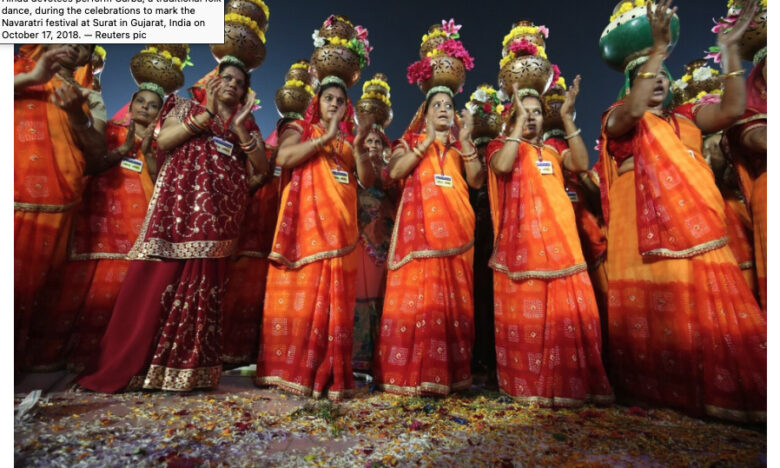KUALA LUMPUR, MALAYSIA, September 28, 2025 (Malay Mail): Hindus across the world are currently observing a nine-day religious festival called Navaratri, worshipping the various forms of the Divine Goddess. Navaratri, which means “nine nights,” falls in the month of Purattasi — the sixth month in the Tamil calendar — which coincides with the mid-September to mid-October period. According to Hindu belief, Goddess Durga fiercely battled the demon Mahishasura for nine days before finally slaying him on the tenth day, known as Vijayadashami. This year, the Navaratri festival began on September 22 and will culminate on October 1. Goddess Durga is worshipped on the first three nights, while Goddess Lakshmi, the Deity of wealth, is worshipped on the next three days. The final three nights are dedicated to Goddess Saraswati, the Deity presiding over knowledge, speech and the arts.
Hindus observing Navaratri consume a vegetarian diet for nine days and abstain from alcohol. Some also fast throughout the day until sunset, breaking their fast only with fruits, milk or bread made from buckwheat flour. On the ninth day of Navaratri, Hindus from southern India conduct the ayudha puja at their homes, where they worship musical instruments and any other tools used to earn their livelihood. On the tenth day, or Vijayadashami, young toddlers are initiated into learning through a ritual called vidyarambham. Hindus from the southern part of India, including Tamil households, make a special altar for Navaratri by arranging colorful dolls and figurines of various Hindu Goddesses called golu. The altar consists of an odd number of steps, draped in cloth. The lower steps are usually filled with dolls or figurines that represent the battles and glories associated with the Goddesses, while the statues of the Goddesses occupy the highest step.
Much more at source.
https://www.malaymail.com/news/life/2025/09/28/from-golu-to-garbha-how-hindus-mark-nine-nights-of-navaratri-with-devotion-fasting-and-cultural-rituals/192398
A daily summary of world news for Hindus and non-Hindus alike

